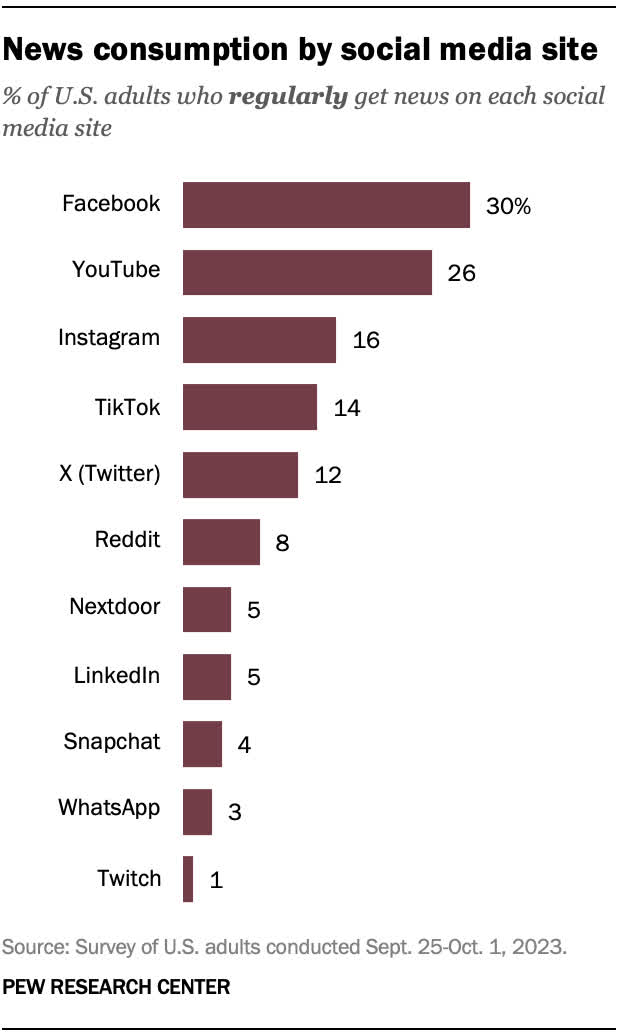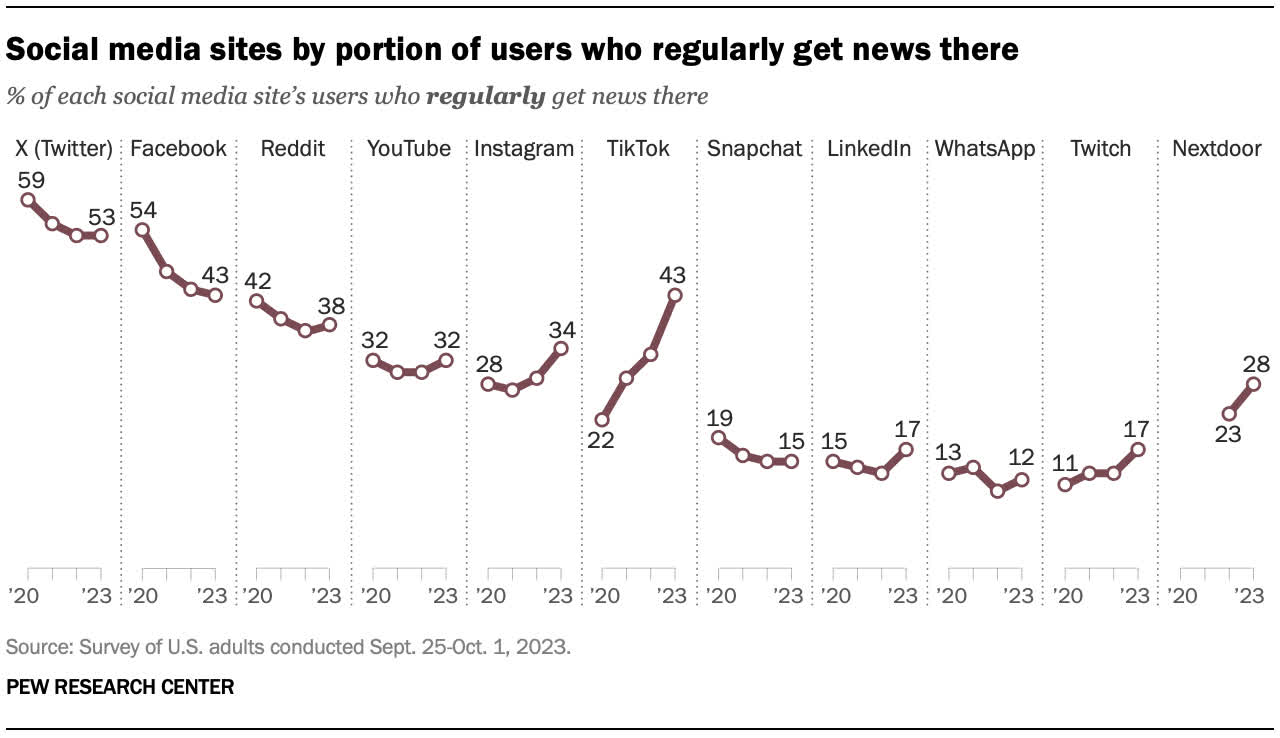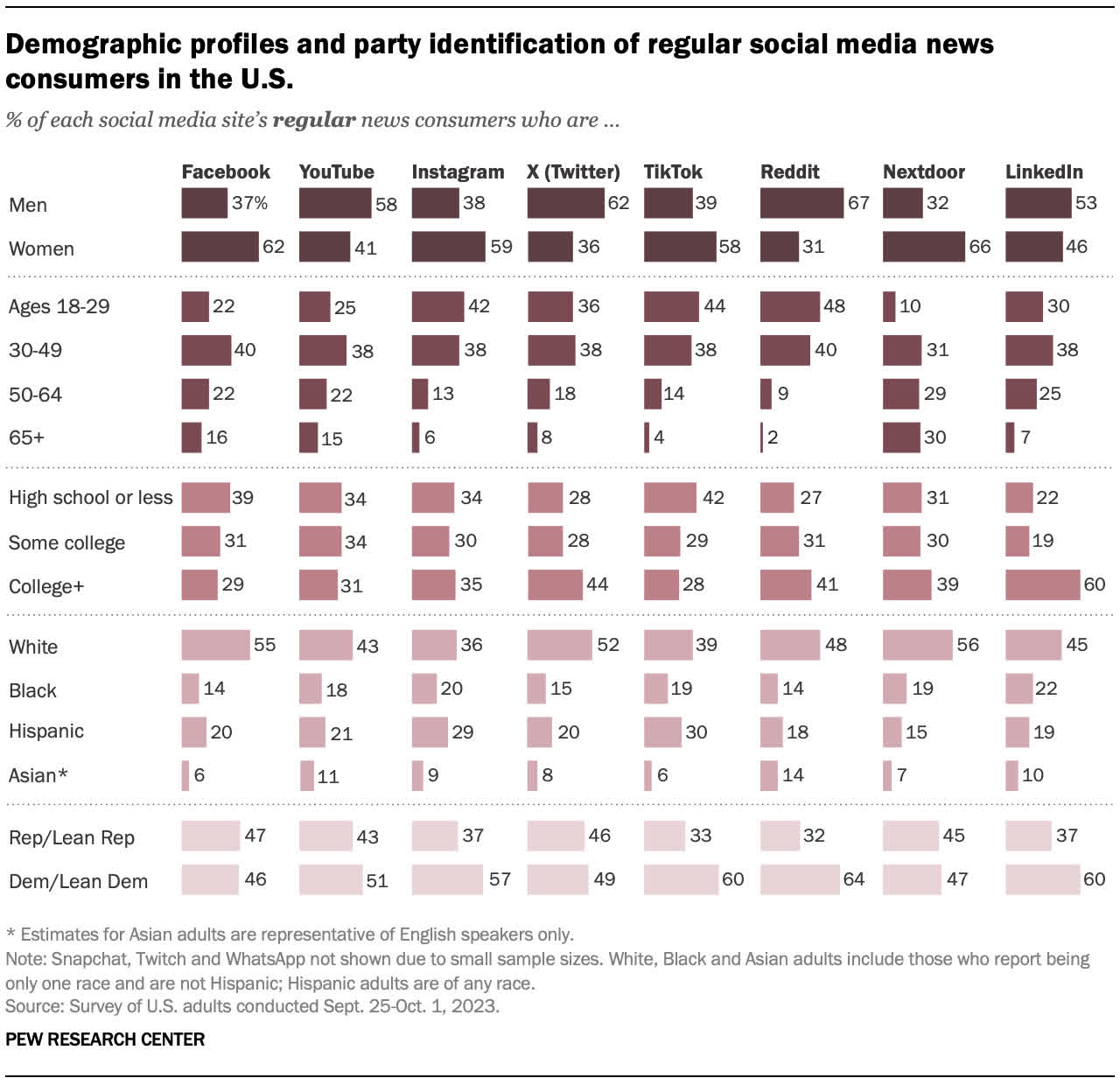In a nutshell: With competition from rival social media platforms, the increasing amount of misinformation online, and its own pullback from the news area, it's surprising to learn that 30% of US adults continue to regularly get their news from Facebook. However, more people are turning to TikTok for their news consumption.
The latest Social Media and News Fact Sheet from Pew Research Center shows that today, half of US adults get their news from the likes of Facebook, TikTok, YouTube, etc.
Facebook remains the most popular social media site for news consumption, with 30% of US adults regularly using the platform for this purpose. It's followed by YouTube (26%), Instagram (16%), TikTok (14%), and X (12%).
It's somewhat ironic that Facebook tops the list for news consumption, given its recent shift towards user-created content, like its short-form 'Shorts' videos. Owner Meta stopped paying US publishers for news content last year, and it recently announced that the Facebook News tab - a dedicated tab on Facebook in the bookmarks section that spotlights news – will be deprecated in the UK, France, and Germany in early December.
"We know that people don't come to Facebook for news and political content – they come to connect with people and discover new opportunities, passions, and interests," Meta wrote in the Facebook News tab deprecation announcement.
While Facebook is the number one platform where adults regularly get their news, the portion of its 240 million US users who regularly get their news there has been falling, from 54% in 2020 to 43% this year. TikTok, by contrast, has seen its percentage for the same statistic almost double in the last three years, from 22% to 43%.
Pew Research also looked at the demographic differences between social media platform users, including genders. Male users were more prevalent on Reddit (67%), X (62%) and YouTube (58%), while females made up a greater number of users on Nextdoor (66%), Facebook (62%), Instagram (59%) and TikTok (58%).
Another interesting finding, which applied to all but one of the social media sites in the survey, was that more regular news consumers were Democrats or those leaning Democratic than Republicans or those leaning Republican. The only exception was Facebook, in which there were 1% more Republicans. The biggest difference between the two political sides was on LinkedIn (37% Republican / 60% Democrat).
The fact so many people still regularly get their news from social media is a concern in an age where generative AI can be used to create convincing content, such as images from the Israel-Hamas conflict. A recent UN survey found that 85% of people were worried about the impact of online disinformation, but sometimes the biggest challenge is convincing users that the fake story they just read is untrue.
Masthead: cottonbro studio



